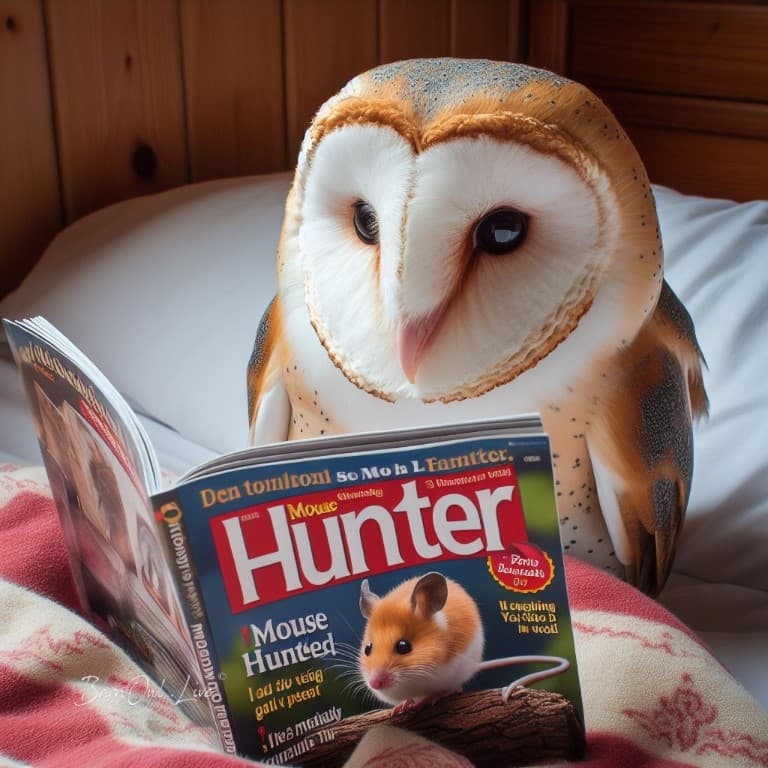In the hushed realm of the night, barn owls emerge as consummate hunters, weaving an artful tapestry of predation that combines stealth, precision, and the primal dance between predator and prey. Their dining ritual, an intricate ballet of instinct and adaptation, unfolds with a unique finesse that sets them apart in the avian world.
The nocturnal symphony begins with the silent soar of the barn owl, its velvety wings slicing through the night air with an almost imperceptible whisper. With eyes like luminous orbs, the owl fixates on the ground below, engaging in a predatory stare that transcends the limitations of darkness. This visual acuity, combined with exceptional hearing, transforms the owl into a master of the night hunt.
As the owl’s gaze locks onto a potential target, the predator readies itself for the pounce of precision. Descending with controlled grace, it employs its unique flight adaptations to minimise sound—feathers designed for silence, ensuring the prey remains oblivious until the last moment.
The moment of impact is a ballet of lethal precision. The barn owl’s talons, razor-sharp and needle-like, seize the unsuspecting prey in a grip that allows little chance of escape. This moment of connection between predator and prey is an echo of the ancient dance of survival, an unspoken acknowledgment of the circle of life.
With the prey secured in its talons, the barn owl turns its attention to the final act of consumption. The beak, a formidable instrument, becomes the conduit for dismantling the prey. Unlike other raptors, the barn owl’s bill lacks a strong hooked tip, making it adept at tearing and swallowing prey whole rather than tearing it into smaller pieces.
The art of swallowing whole is a distinctive trait of the barn owl’s feeding ritual. Small mammals, the primary fare of these night hunters, are engulfed in one continuous motion. This adaptation aligns with the owl’s hunting style, allowing for a swift and efficient dining process without the need for the protracted task of tearing apart larger prey.
The barn owl’s feeding spectacle continues beyond the act of consumption. Indigestible components—bones, fur, and other remnants—are formed into compact pellets within the owl’s digestive tract. These pellets are regurgitated, a sort of culinary commentary on the owl’s menu, offering valuable insights into its diet and the ecological health of its habitat. The culinary palette of the barn owl is diverse, reflecting the ecosystems it inhabits. While small mammals like mice and voles are staples, these owls showcase adaptability, sometimes including birds, insects, and even small reptiles in their gastronomic repertoire.
